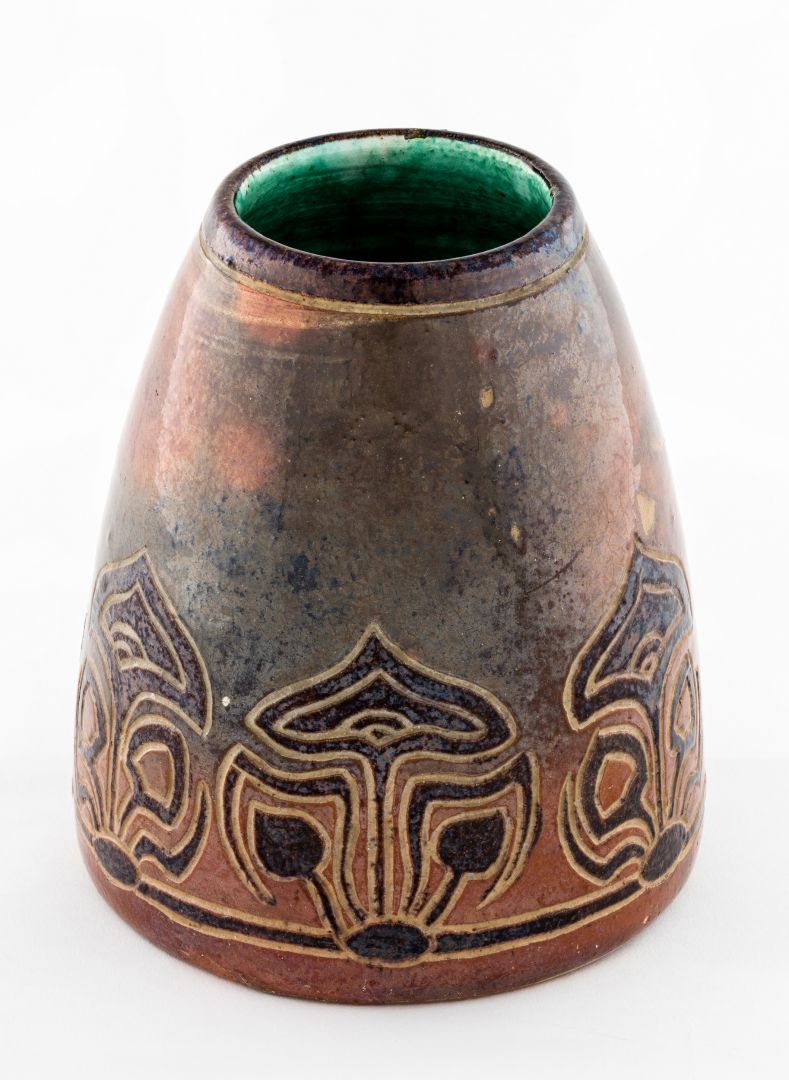Hall 3 - 5. view
Vase
GRÓH, ISTVÁN (1867–1936)
Vase, c. 1900–1901
wheel-thrown earthenware with engraved decoration and engobe pottery glaze; rim diameter: 8 cm, base diameter: 14 cm, height: 16 cm; marking etched in paste on the base
Historical Collection, Inv. No.: 53.1745.1.
The following ceramic pays tribute to an extremely multifaceted master. István Gróh was an artist, ethnographer, art historian, conservator and influential educator in one person. All of his endeavours were motivated by the preservation of Hungarian material and intellectual culture and the nurturing of traditions.
As an artist he primarily focused on passing on the forms and motifs of Hungarian folk art to younger generations. In 1904 he released the publication titled Hungarian style patterns, which consisted of eighty templates that were compiled together with his students, featuring motifs from wood carvings, embroidery, appliques and ceramics. Prior to this, he had already showcased how these decorations could be used. In 1901, on the exhibition held by the Hungarian Applied Arts Association at Szeged, he revealed several glazed earthenware vessels that were made based on his designs by potter András Urban from Rožňava.
The vessel displayed in the gallery is from the collection from Rožňava. The vase represents a style that can be described as Folk Art Nouveau, which seeks to merge traditional motifs with turn of the century linear decorative elements, resulting in a moderate pattern consisting of six stylized flowers. The vessel is further made valuable by the fact that it was donated to the museum by the artist in 1905, along with seventeen other vessels also designed by him. This generous donation from the teacher of the Budapest School of Applied Arts was made possible due to his deepening ties with Miskolc at the time. In the previous year, the Hungarian Applied Arts Association held its second rural exhibition at Miskolc, where István Gróh also presented his works. Andor Leszih, museum associate and director from 1905 onwards, played a major role in the realization of the exhibition as he was committed to idea of combining Art Nouveau efforts with the search for a national art style. A national exhibition provided a great opportunity for Leszih to meet likeminded artists and experts. His vast network of contacts also proved to be essential for the expansion of the museum’ collections.
Andrea Pirint
